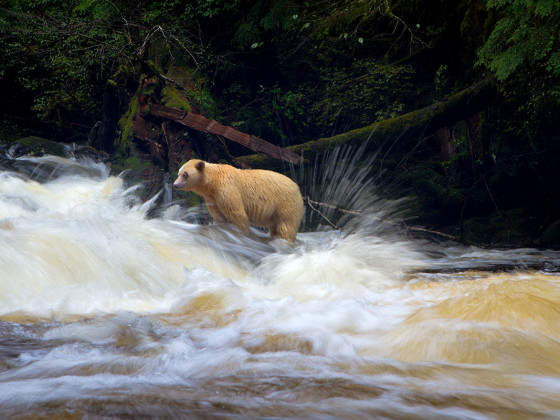“The raven left every tenth bear white, just to remind us of when the earth was covered in glacier,” says Marven Robinson of the Gitga’at First Nation in British Columbia, Canada. The white bears are known as Moksgm’ol to the people of the First Nations, and as Kermode bears to scientists. They aren’t polar bears or albino bears — rather, they’re black bears born with a double recessive gene that turns their fur white.
Robinson owns a company called Gitga’at Spirit Tours that operates out of the Great Bear Rainforest in British Columbia. Though the forest is named after its bears — mostly grizzlies and black bears — it’s home to countless other beautiful wild animals, from whales to wolves to cougars, and, of course, to the salmon that feed the forests’ bears.
Robinson tries to get his visitors close enough to see the bears, but always without disturbing them. “I’ve learned over the last 20 years how to read a bear and see the reaction the bear is having,” Robinson says, “and I don’t want to push the bear around, so we try and put ourselves in places so that the bear can make the decision on his own.”
It’s a roll of the dice as to whether these bears are born white or black. Robinson tracks a specific bear who has two black cubs, but says her cubs were white four years ago. So you never quite know what you’re going to get in this special corner of Canada.
The First Nations and environmentalist groups have fought to keep the forest pristine and untouched. “We’re trying to keep this area the same,” Robinson says. “We don’t own it…what’s really important is that I can’t claim something here right now. This belongs to our whole nation. It belongs to the grandkids and the kids who aren’t even born yet. This is important because we survive here.”

